PTG Problems Related to the Feet
Click on an image to see it at full size.
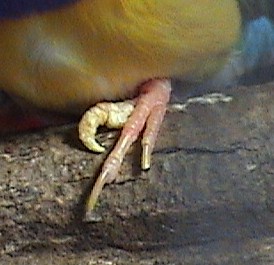 |
Diagnosis: Scaly Foot Mites
(Knemidokoptes spp.)
Treatment: Apply undiluted S76 or Scatt using a cotton bud (Q-tip) for one day each week for 6-8 weeks or until the crusty patches fall off. Scaly mites attack weak families of birds. The highest quality diet is especially important because Scaly Mites will also attack and infect nutritionally compromised birds. The full Marshall Health Programmes are recommended.
|
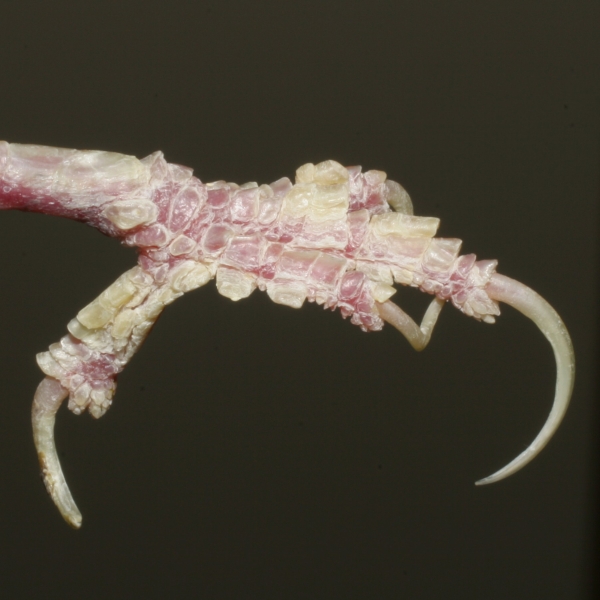 |
Diagnosis: Scaly Foot Mites
(Knemidokoptes spp.)
Treatment: Apply undiluted S76 or Scatt using a cotton bud (Q-tip) for one day each week for 6-8 weeks or until the crusty patches fall off. Scaly mites attack weak families of birds. The highest quality diet is especially important because Scaly Mites will also attack and infect nutritionally compromised birds. The full Marshall Health Programmes are recommended.
|
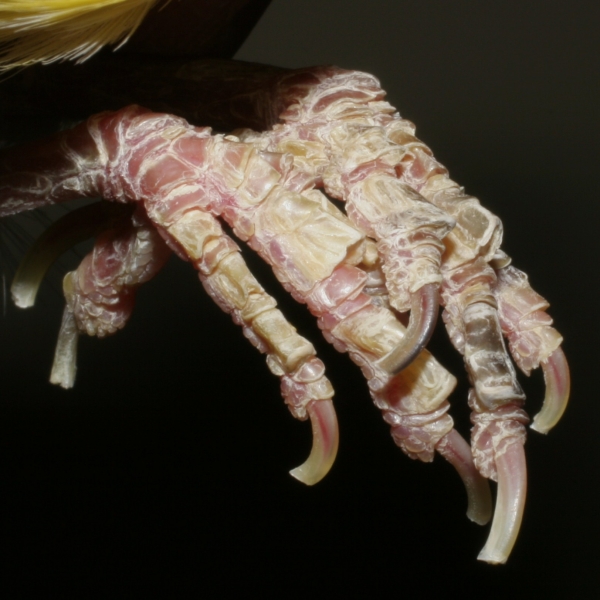 |
Diagnosis: Foot scales on old canary cock bird
Treatment: No treatment necessary. As birds age, the scales covering their legs and feet become more pronounced.
|
 |
Diagnosis: Double toes and nails on rear facing toes. Both feet have this same abnormality.
Treatment: No treatment necessary. This is just a developmental abnormality and it will not affect the health or well being of this bird.
|
 |
Diagnosis: Pox Virus
Treatment: Separate this and any other infected birds from the rest of the flock. Pox virus is highly contagious once sores develop. Paint sores daily with Betadine to dry and cleanse, but avoid bleeding. Add KD Water Cleanser to drinking water and fortify diet. Hand feed or force feed any birds that are not eating. Cull birds that fail to eat within 2 weeks.
|
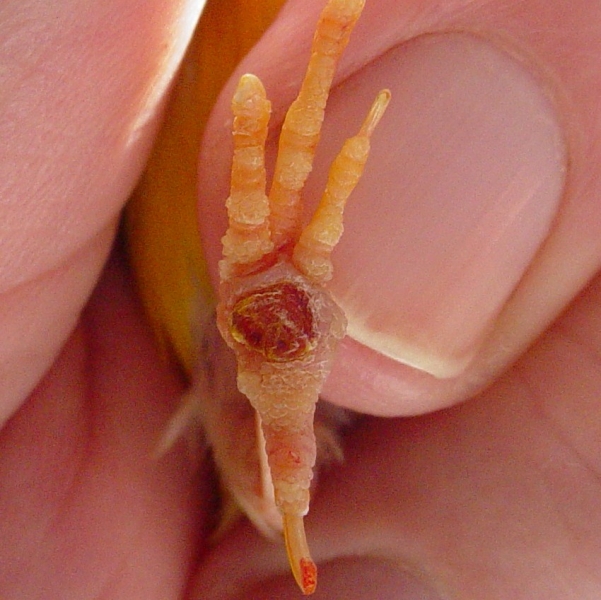 |
Diagnosis: Bumblefoot
Treatment: Warm KD Water Cleanser foot baths several times each day. Administer an antibiotic with Amoxicillin and provide soft perches lined with vetwrap until the foot sore heals. In the future, the perches need to be cleaned frequently and they should have some “give” when the bird lands. Perches should have varying diameters to allow the foot to exercise.
|
 |
Diagnosis: Possibly Avascular Necrosis. There might also be a very fine nesting material fiber entangled around the foot. Diagnosis for fiber would require viewing under a dissecting or operating microscope.
Treatment: Provide warm KD Water Cleanser foot baths several times each day to relieve swelling. If this does not resolve the problem, I would recommend a visit with an avian vet as it is difficult to know exactly the problem from viewing this photograph.
|
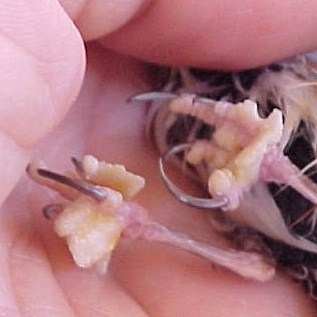 |
Diagnosis: Scaly Foot Mites
(Knemidokoptes spp.) plus a nutritional imbalance.
Treatment: Because the growths are preventing this bird from standing, you will need to trim off some of the tassels before applying the S76 or Scatt. Scaly mites attack weak families of birds. The highest quality diet is especially important because Scaly Mites will also attack and infect nutritionally compromised birds.
The full Marshall Health Programmes are recommended.
|
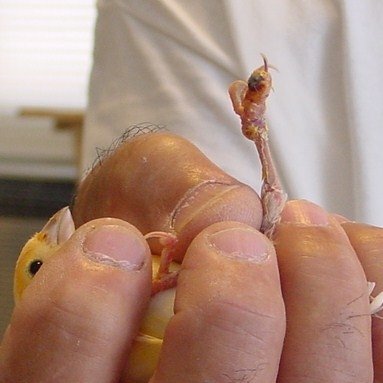 |
Diagnosis: This could be a Pox Virus or Avascular Necrosis.
Treatment: Provide warm KD Water Cleanser foot baths several times each day to relieve swelling. If this does not resolve the problem, I would recommend a visit with an avian vet as it is difficult to know exactly the problem from viewing this photograph.
|